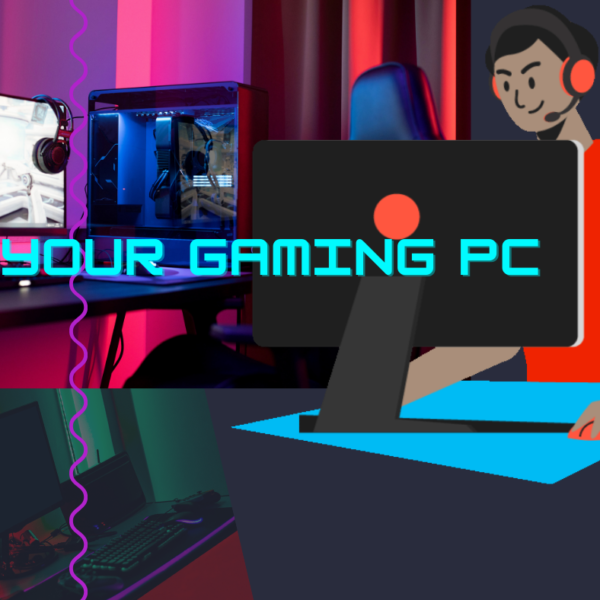In our post we will try to discuss the possible causes which troubled you with slow performing computer or laptop and tips to improve them. Just read the below post if you thought why my computer is so slow and before you makeup your mind to replace or upgrade it.
As the market of technology changing daily with new innovations, new products, and new features we left with so many options to choose from. Buying a new laptop or a new computer whether it is for your business purpose, work-related, personal use or to gift someone we spend time in deciding which one to buy.
- Which brand to choose
- What specs should we choose
- What features suit best
- How much it will cost
These options will give you a very wide list to select from. You start consulting, reading, watching videos, comparing and all the possible research you could do among so many brands & different specs and finally, you decide to buy one from them.
In the beginning, you will be happy with your choice and your computer or laptop works super-fast for you. As time goes you install different applications, add different features install and uninstall many software programs.
At some point maybe after few months or couple of years (could be even at the beginning) you feel your computer or laptop is not as fast it was and as the time goes by it starts to hang or lag substantially. Then the very common question shouts in the head “why my computer/laptop is slow”, “how to make my laptop perform faster”. This could be because of any reason, here we will discuss a few most anticipated possible causes and their best possible solutions to improve the performance of a slow or a lagging system.
Here we have listed out few most possible causes to make your computer or laptop slow and their feasible solution to work around.
- A huge amount of temporary files
- Low free disk space on the hard disk
- Disk cleanup to be performed
- Unwanted programs or processes running in the background
- Programs scheduled to start at the startup
- Outed drivers or incorrect drivers installed
- Old hardware
- Virtual Paging
- Defragment Hard Disk
- Malware/viruses
Now these, in my opinion, are the most common causes to make your computer run slower than earlier. I will walk you through each step to work around these points if you have done any of them then you can skip and select whichever you like to do the troubleshooting.
1.Clear the clustering temporary files
As the name says these are the temporary files which your operating system creates or needs when some programs are running or installed for that particular time and may not be needed later. So you can get rid of these files to free up the disk space.
The easiest way of getting a breathing space when your disk is almost full is to clear the temporary files or temp files.
How to delete the temporary files?
A quick way of getting to the windows temporary files is by access the temp folder %temp% of windows where most of the temporary files are stored.
You have to type %temp% either by
- clicking the start button in windows 10 and type %temp% and hit enter
- In windows 8 or windows1 click the start button and type in search button %temp%
- In windows 7 click start and select run from the menu
- Or the SIMPLE way is by pressing windows key + r on your keyboard of windows and type %temp% and hit enter
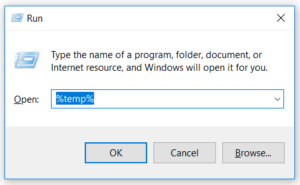
This will bring up the temp folder you can select all the files and folders in it and delete them. This folder list all the temporary files used by your operating system depending on your usage the folder size will be.
There is nothing to worry about losing any data or messing up with the system by deleting these files and folders. Select all files by clicking on the first file or folder in the list and going all the way down to the last file or folder by holding the shift button click on it. Or the SIMPLE way is to click anywhere in the folder and press Cltr key + a, on the keyboard to select all the files and folders.
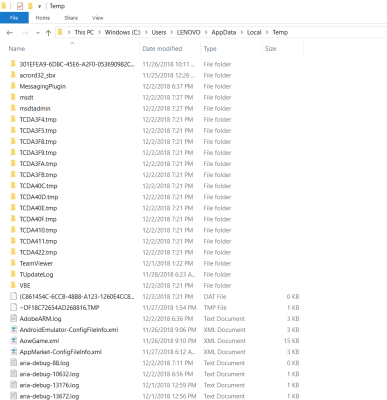
Now with all the selected files and folder press delete on the keyboard which will send them to the recycle bin or press the delete button while holding the shift button which will permanently delete them. (If you have pressed the delete button go to recycle bin and empty it.) Depending on your operating system and the settings it might ask you for confirmation, press yes for bulk deletion.
While deleting if there are any warning popup appears with a message that the file is in use or locked, press skip to proceed for the next file. If it appears again select/ tick DO THIS FOR ALL CURRENT ITEMS and press skip. These files are actually are in use by any applications or programs or the operating system which are locked and cannot be deleted. This is why there is nothing to worry about deleting the temporary files as if they are really needed by the operating system or the programs it will not allow you to delete them anyways.
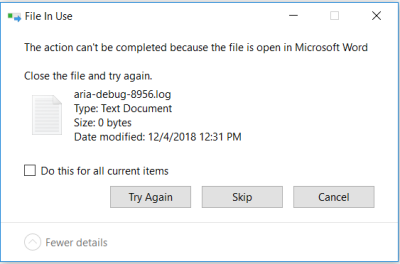
- Low free disk space on the hard drive
In the above step, we have deleted the temporary files which will give us some extra usable working space on the disk. Another possible reason for your computer or laptop to work slower is the free disk space on the drive.
For the operating system to run and process different operation it needs a certain amount of free space on the disk, if there is not enough space it will run the operating system with minimal settings. Here we will see how to Free up disk space windows 10 same can be applied to windows 7 operating system.
You can check and search for the files which have occupied most of the space on the C Drive ( or whichever is the drive letter where the operating system is installed, here we will assume it as C drive). You can open the file browser click on This PC in Windows 10 or My Computer in Windows 7 and go to the drive C and in the top left corner in the search bar type size:>10GB ( or the file size you want to search). It will give you the list of files check where those are files needed then move them to the different folder or an external drive or delete them in case you don’t need them.
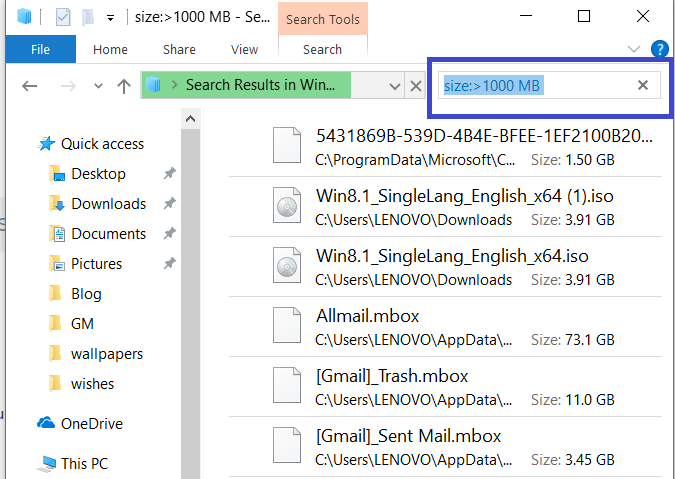
Now in the picture, you can see there are some download files which I had downloaded earlier and I might need now thus I can delete and gain that amount of memory on the drive.
Note: Do not delete any files which you have no idea what those files are. Those files could be related to windows or some programs.
Another thing to stop adding the extra space eating file on the C Drive is by deactivating the Hibernation. Hibernate will make your computer sleep and start from the place where you left without going through all the startup process. But, this will create a hibernate file which will store all the data which is present on the RAM hence the file size of hibernation will depend on the memory of the computer.
You can disable the hibernation by going to the control panel, choose power options.
On the left side click on Choose what the power buttons do

Then click on Changes settings that are currently unavailable

And then uncheck the box Hibernate. Click on save changes and restart the computer.
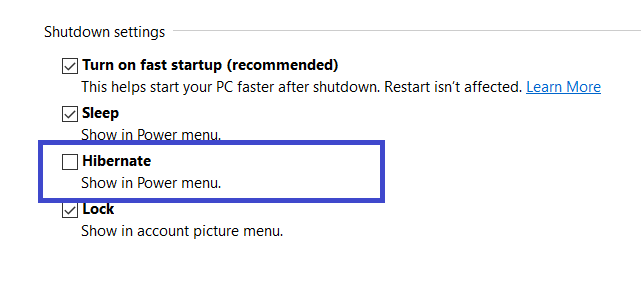
3.Perform a Disk Cleanup
After performing the above steps you can still clean few more temporary files by using the windows utility Disk cleanup. Disk cleanup can be used to delete all the temporary files, empty the recycle bin if not empty, temporarily downloaded files, directx chache, thumbnails chache which will not affect the actual files.
Disk cleanup utility can be launched or started from
- My Computer or from This PC right click on any drive C or D or any other drive you wish to clean and select properties.

- From command prompt – by pressing Windows +R keys or typing cmd in the start menu
Type – cleanmgr.exe
And select which drive to be cleaned up

Now select all the unwanted files to be deleted and click ok. This will remove all the unwanted files found by the operating system without affecting the functionality of the system or any of your personal files.
4. Unwanted programs or processes running in the background
Sometimes you don’t need some process or programs to be running in the background. There are many programs which might get started with your system start, they are the processes which are there to support when needed.
But as we know if they are running that means they are sharing and eating up the resources. So, if you feel that some processes are not necessary for the time being then you can end them to free up CPU and memory utilization.
The processes which are running on your system can be viewed in Task Manager.
Task manager is a place where you can see all the running applications, monitor the activities or usage of memory, network, CPU, DISK, GPU and others.
The task manager can be accessed through various options
- Press CTRL+SHIFT+ESC keys
- Press CTRL+ALT+DELET keys and select task manager
- Right click on the task bar and select task manager
- Or else just type task in the start and you will get the suggestion from the search and select task manager.
In the beginning when you open task manager it might be in its minimal state, press more details to view all the features of the task manager.
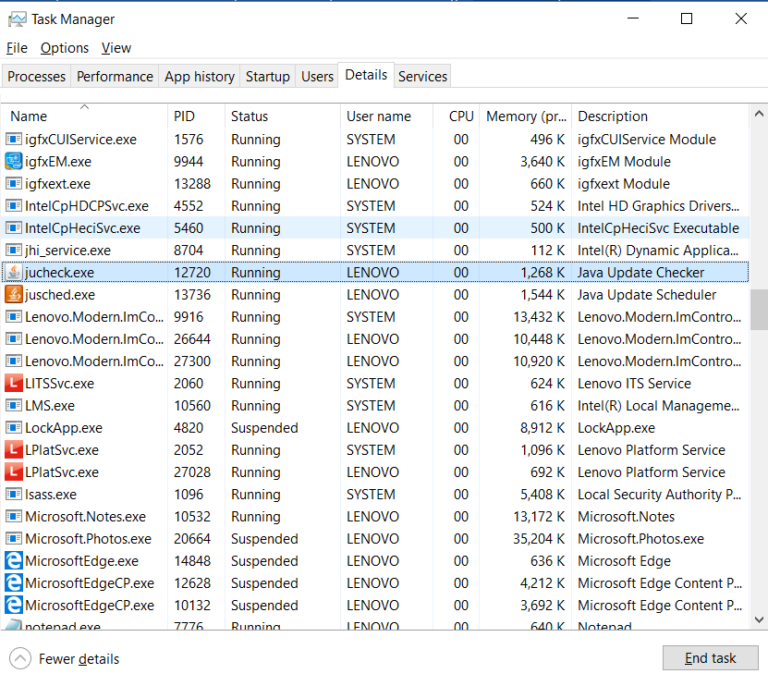
In windows 7 or less click on the processes tab, or else click on details tab to see all the running processes you can sort them according to their usage of CPU or memory. Go through all the process and if you feel any unwanted process running click end task to end the process.
Note: If you are not sure what will be affected by closing a process please avoid closing it.
5.Programs scheduled to start at the windows startup
Ever wonder why it takes time to boot up the operating system, well one reason could be because of too many apps scheduled to start at the startup of the operating system.
This feature can be helpful if you want to launch a particular program or application to start with the windows startup.
Or to speed up the boot up process check this startup option and disable if any program which is not required to be started at the booting time.
In windows windows 7 or earlier operating system you can type msconfig.exe in Run ( window+R) and go to the startup tab to check the list of programs scheduled
Or in windows 8 or windows 10 open the task manager and go to the startup tab
Here you can see the impact of each application on the boot time if there is any high impact and you don’t really want that program to start at the boot you can disable the application schedule to start.

Next time when windows starts, the programs marked as disabled will not be started until manually started by the user.
This feature will definetly increase the boot time if there were any high impact application were scheduled to start.
6.Outed drivers or incorrect drivers installed
Drivers are software that tell your computer how to work. When you buy a new piece of hardware, such as an external hard drive or printer, the manufacturer will usually include a driver for it in Windows. You can also download drivers from the Internet and install them manually onto your computer if you’re uncomfortable with automatic updates—but this may not be necessary if all your devices work fine together without any problems.
If there are outdated drivers installed on your system (or if you’ve recently updated them), these can cause problems with performance when some functions don’t work as expected or won’t even start at all because they haven’t been properly configured by those old versions yet – which means that sometimes old versions may be better than newer ones!
7.Old hardware
Check your computer’s age:The first thing you should do is check the age of your computer. If it’s more than five years old, then it’s time to replace some or all of its components. There are several websites that will help you figure out how much money you need to spend on a new system and how much RAM (computer memory) and hard drive space (storage) would be best for your needs.
You might also be interested to read our post on Intel P-Core and E-Core
8.Increase Virtual Paging
Virtual memory is used to store data that is not currently in use. This is because your computer has to keep track of all the information it needs, even if you don’t have it open at the time. Virtual memory allows programs to run faster by storing their data into chunks of RAM (random access memory). When you’re running out of RAM, virtual memory kicks in and stores your program’s files on hard drives so they can be accessed quickly when needed.
With more than four times more space than traditional hard disk drives, solid state drives (SSDs) allow computers to perform better than ever before due to their fast read/write speeds and smaller size which makes them more affordable than traditional HDDs while still offering great performance benefits over conventional mechanical hard drives.
9.Defragment your hard drive
Defragmenting your hard drive helps to make your computer run more efficiently.
To defragment, simply open up the hard drive in Windows and choose “Disk Cleanup” from the menu. This will start a scan for unnecessary files on your computer’s hard drive, which can be found by clicking on “Search for and delete unused files.” You then have two options: to delete all of the data that has been identified as unnecessary or to keep any identified files intact but move them around so that they are no longer stored next to each other or near other files with similar names (like “.txt”). Either way, this process takes some time—about 30 minutes—so be patient!
Once finished, go back into Disk Management (from Control Panel). Here you should see all of those smaller drives now connected together under one larger name: “C:”
- Malware/viruses
The free application Microsoft Windows Malicious removal tool can be used to perform to identify if your device is infected with any malware or any virus.Type mrt.exe in Run window to launch this program and perfom the scan for any infection.
However, Windows defender is pretty decent, we still recommend you to get an antivirus application which keeps your device protected.
Always keep the antivirus upto date and be vigilant while you download or install any application or new program. While browsing be carefull of links and malicious websites which can inject malware in your device.
Conclusion:
There might be many causes to make your device slower, the solutions or tips provided here are not always easy for everyone, but to be honest all these are very much worth the effort to make your device run smoother. If we have missed any or if you feel any of the above needs correction please let us know below in comments. You can also comment on our facebook page



